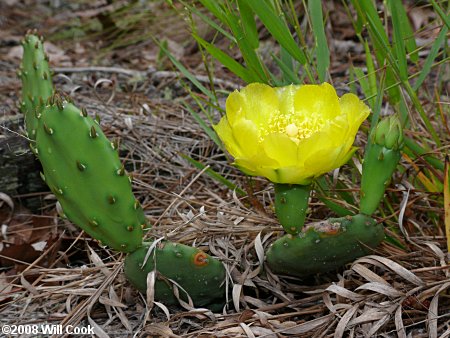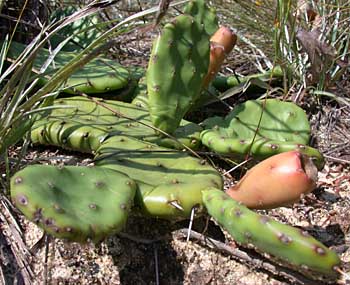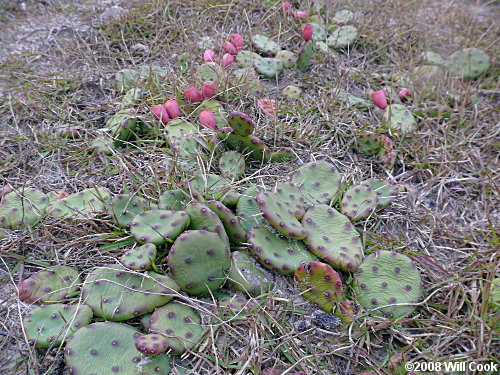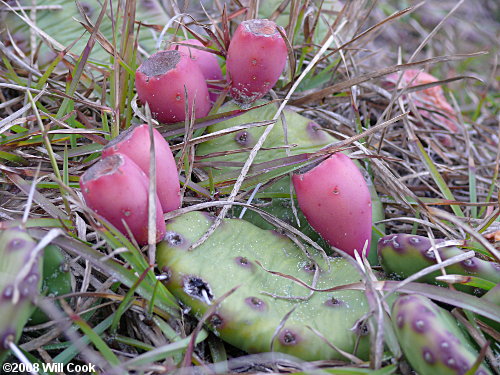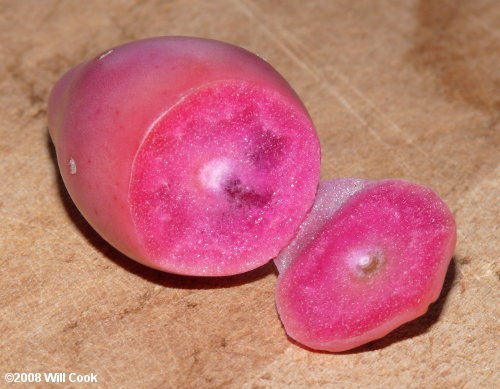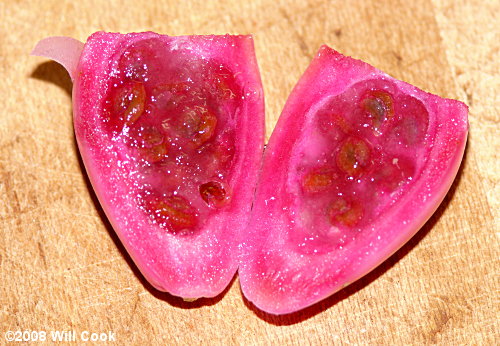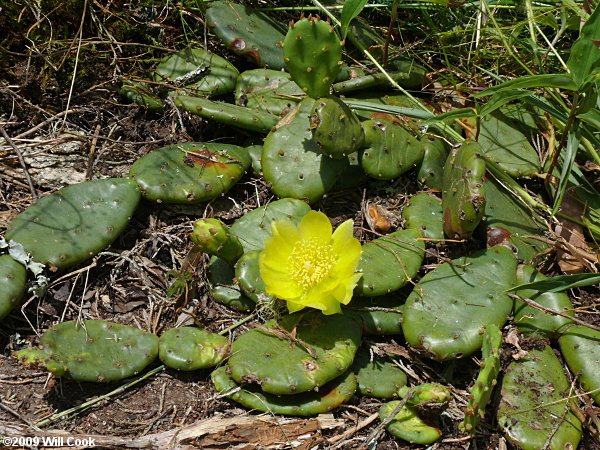
Fairly common in dry, sandy, open areas in the Coastal Plain, this low-growing cactus also rarely occurs in the Mountains and Piedmont of North Carolina.
Wake Co., NC 5/23/2009.

The spines (sometimes lacking) are not nearly as obnoxious as those of the less common Dune Prickly-pear (Opuntia pusilla), which is restricted to the immediate coast.
Wake Co., NC 5/23/2009.
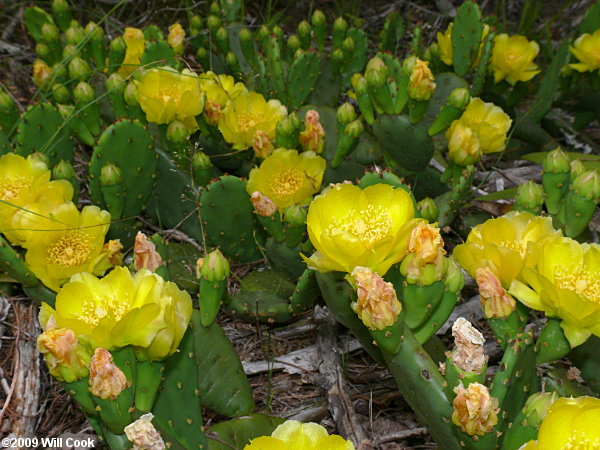
Showy yellow flowers appear in late spring.
Wake Co., NC 5/23/2009.

Wake Co., NC 5/23/2009.
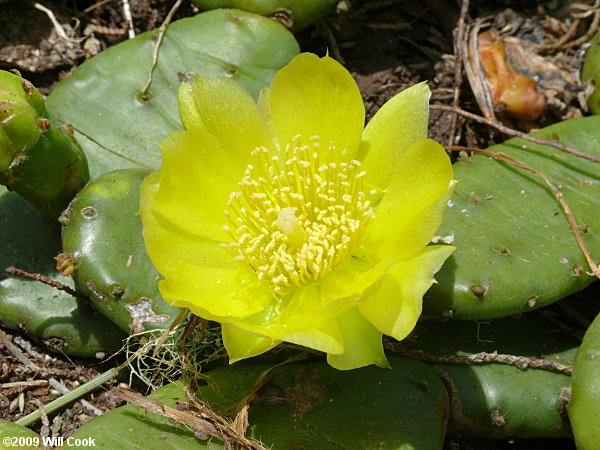
Wake Co., NC 5/23/2009.
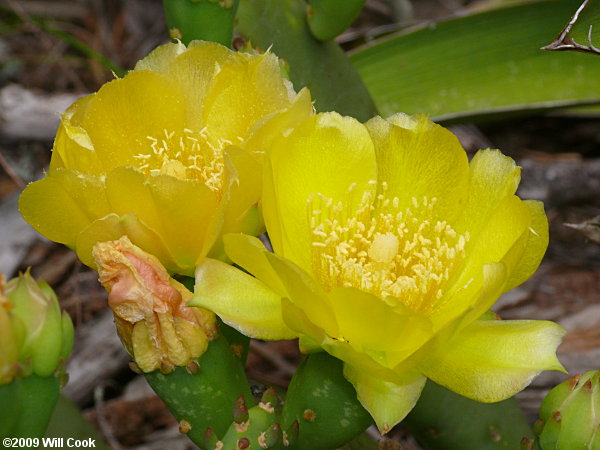
Wake Co., NC 5/23/2009.
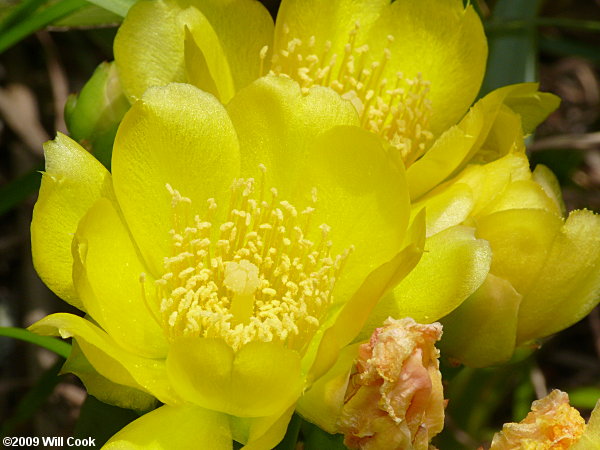
Wake Co., NC 5/23/2009.

Wake Co., NC 5/23/2009.
